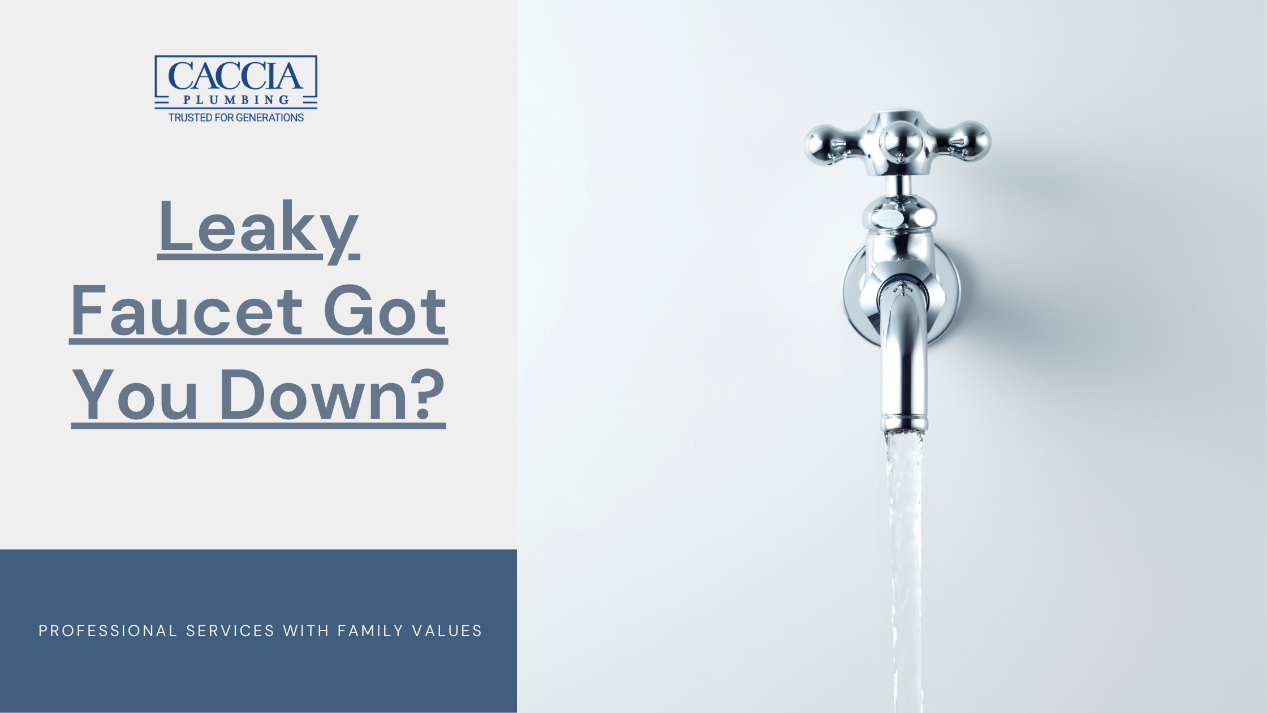A leaky faucet with a slow drip can be bothersome and even annoying. Not only it can keep you awake at night with its constant dripping, but it can also add big bucks onto your water bill. A slow drip can easily turn into a larger problem with a steady stream of water flowing from the faucet of your San Mateo home.
This issue may do more than keep you awake at night, and it may also be responsible for higher than normal water bills that take money out of your pocket. After all, even a slow drip can result in a lot of wasted water, and you will need to pay for that wasted water. Repairing the leak may be a top priority for you, and it may be easier to do than you might think.
What Causes a Faucet to Leak?
Damaged Cartridge
If your faucet is leaking, it might be because the cartridge inside is wearing down. This is an easy fix, you can swap the cartridge with a new one but make sure that you measured the cartridge before changing it out. But if you don’t have some knowledge on how to DIY this problem, calling a plumber is highly recommended.
Corroded Valve Seat
If the leak occurs from the spout, it could be an issue with the valve seat, which connects the faucet and the spout. Accumulation of water sediments causes the valve seat to rust, which will cause leakage on the spout area. You can avoid this by consistently cleaning the valve seat, usually with the help of a professional plumber.
Water Pressure
If your faucet tends to drip at certain times of the day, it might because the water pressure is too high! Water pressure can hinder water from flowing away, causing it to back up and leak out at another place, like the faucet or the toilet tank.
Bad O-rings
One of the most common issues to look up when your faucet is dripping is the O-rings. An O-ring is like a small disc that is attached to the stem screw, which specifically holds up the handle of your faucet in place.
This issue occurs, particularly in the cartridge faucets. Over the course of regular use, your faucet O-rings can loosen or be wear out, which will cause a drip on your faucet near its handle. If this is the issue, a simple O-ring replacement is all that you need to do.
Damaged Plumbing
If the leak comes from the pipes underneath the sink, the cause is most likely a damaged pipes or fittings. If this is the case, you may need to call in a professional plumber.
Tools and Materials You Will Need
To reduce the time it takes to fix your leaky faucets, you must gather all the tools and materials first into your toolbox before getting into work. The materials you may need to repair your leaky faucet includes:
- Rags
- Adjustable wrench
- White vinegar
- Channel-lock pliers
- Allen wrenches
- Phillips and flat-head screwdriver
- Scouring pad
- Washers and seals
- Replacement parts
How to Fix a Leaky Faucet
Follow these steps to know how to stop a leaky faucet:
Step 1: You need to determine what type of faucet you are using. Most of the common types are cartridge faucets, ceramic disk faucets, and ball faucets.
Step 2: Shut off your water supply before doing the repair work. Look for the shut-off valve under the sink. Turn it clockwise until it’s tightly closed.
Step 3: You are dealing with small screws as you take apart the faucet, and you don’t want to end up losing them down your drain pipes. Conceal the holes with covers or plugs, or you can also push a rag down to the pipe to avoid losing any small part in it.
Step 4: Remove any parts from the handle. For ceramic disc faucets, remove first the set screw and take out the retaining nut before replacing the cylinder.
For the cartridge faucet, the steps made on removing the ceramic disc faucet are quite similar to it, but you will have to detach the retaining clip or nut in order to replace the cartridge.
Step 5: Use a wrench to loosen up the packing nut and the stem. Be sure to check if these parts have any damage. If they have, replace them immediately.
Step 6: Check all the parts like the seals, rubber washes, and the O-rings if they look rough. If damaged, take the old parts to the store with you to assure that you’re buying the right replacement.
Step 7: Reassemble your faucets and test the water flow. Turn your water back on, make sure you turn it back slowly. If you applied pressure quickly, it may cause more serious damage.
Step 8: If steps 1-7 didn’t work, you might need to call in a professional plumber to come and inspect the issue.
When You Call a Plumber
When you have a slow leak or a steady stream of water trickling from the faucet, you should contact a plumber for repair assistance. A plumber will visit your home to inspect the faucet, and the reason for the leak can be determined.
This is the first step in the repair process because it will tell you what repair work needs to be done and what the cost of the repair work is. Keep in mind that most reputable plumbers will travel to your home with all of the tools and equipment necessary to complete most repairs right away, and this means that you may enjoy same-day repair service.
Possible Repair Options
There are a few possible options that may be used to repair the faucet. In extreme cases or if you request that this option be pursued, the faucet can be replaced entirely. This may be preferred if the faucet is older and lacks the aesthetic look that you desire for your San Mateo home.
The plumber can install the fixture that you have selected. While this is an extreme response to a leaking faucet, another repair option may be suitable as well. Underneath the face plates on the faucet handles are screws that may come loose over time and with regular use. Accessing and tightening the screws is a great way to fix the problem.
Getting the Ball Rolling
The bothersome sound of a leaking faucet and the associated wasted water will both continue to be problems for you until you fix the problem. Now is a great time to call James Caccia Plumbing at (650) 342-5363 for assistance with your San Mateo, CA plumbing repair needs.

